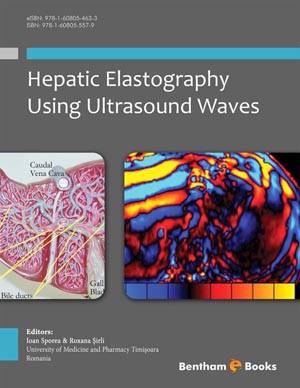Abstract
ARFI elastography is a new method developed in the last 3 years for the noninvasive evaluation of liver fibrosis, integrated into a Siemens Acuson ultrasound system. Usually 10 valid measurements are performed in the right liver lobe, a median value is obtained and the result is expressed in meters/second. In patients with chronic hepatopathies, the AUROC’s for predicting significant fibrosis range between 0.75-0.85 and for predicting cirrhosis between 0.85-0.95, the diagnostic performances being better in patients with chronic hepatitis C. Most studies regarding ARFI were performed in patients with chronic viral hepatitis, but recently data regarding patients with nonalcoholic fatty-liver disease and post-transplant patients were published. To increase the accuracy of liver cirrhosis diagnosis, the spleen stiffness (SS) assessed by ARFI can be used. ARFI it is a reproducible method, the intraclass correlation coefficient for interand intraobserver measurements ranging from 0.81-0.87, better in patients with severe fibrosis and cirrhosis. Similar with Transient Elastography (TE), elevated levels of aminotransferases are associated with the increase of liver stiffness (LS) values assessed by ARFI. Even if the manufacturer did not recommended the use of technical parameters IQR (interquartile range interval) and SR (success rate) well-known from TE, published data proved that the accuracy of the method significantly increased with the use of these quality parameters. Regarding the prediction of liver cirrhosis complications, especially portal-hypertension, data regarding the usefulness of LS and/or SS are not so solid, but ARFI accuracy can be increased by combining different parameters.
Keywords: ARFI elastography, liver stiffness, chronic hepatitis, liver cirrhosis, portal hypertension.






















